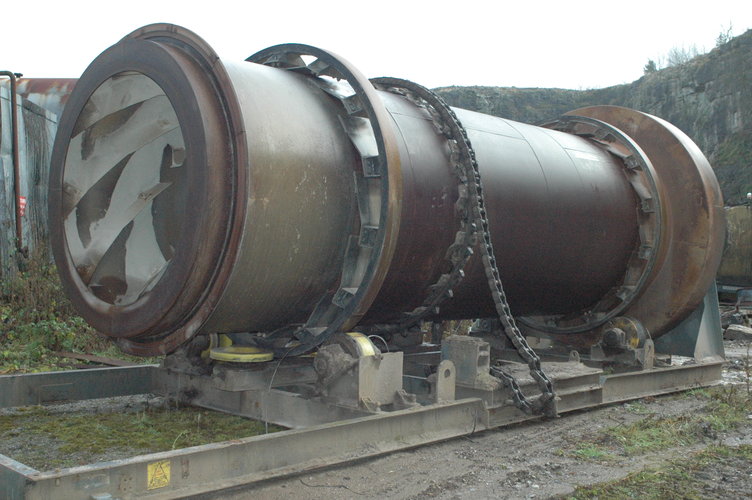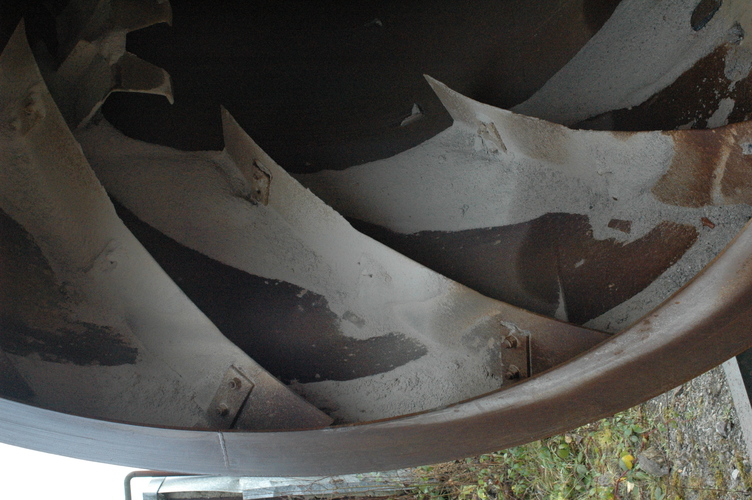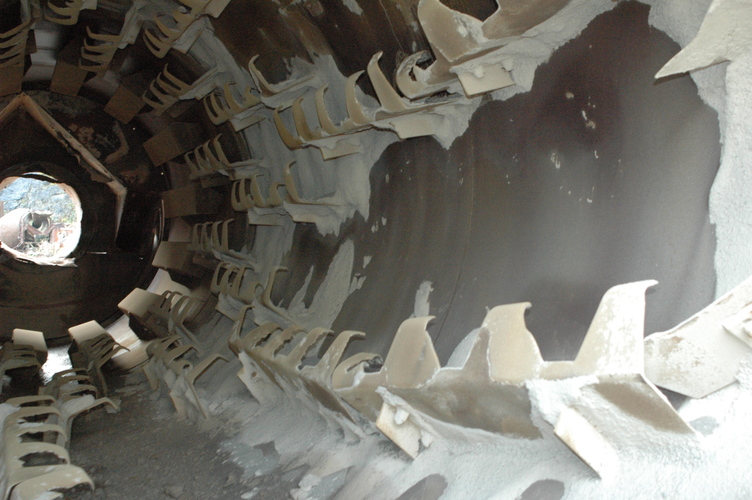Rotary Kiln Dryers

Rotary kiln dryers are the most common method of drying sand and aggregates on a large scale. The material is feed in at one end of a rotating tube usually by a bucket elevator or conveyor. The rotation and angle of the dryer means the wet material flows slowly through the rotating drum, while being lifted up the side walls by metal lifters allowing the aeration of the product. At the opposite end of the drum to the feeder a burner is used to direct a large flame down inside the drum.
Basic structure
A kiln dryer is usually built on a frame with has four rollers and the drive attached. The kiln drum sits upon the rollers and con rotate freely on the rollers, the drum is usually driven by a chain and sprocket mechanism with a large sprocket with covers the circles the diameter of the drum. The dryer is set at a very slight angle to ensure the product flows in the right direction when inside. The product is usually fed in from one end by gravity from a bucket elevator or conveyor and then discharged at the other end by simply falling out of the drum into a hopper or chute.
The first couple of feet of the inside of a kiln dryer usually consists of metal plates shaped to screw the material forward through the dryer. This prevents build up of materials at the inlet which can cause spillages.

Lifters inside the drum ensure that the product is constantly turning and dropping directly through the flames of the burners.

Fuel
Rotary kiln dryers are seen using all types of fuel to achieve heating of the aggregate. The most common fuel used is gas oil (diesel). Larger operations are sometimes seen using natural gas to achieve more efficient burning. With the rising cost of fossil fuels many large operations now also use alternative fuels such as waste oil, shredded rubber (usually from tyres) and even bone waste. The different fuels require different treatments to ensure complete combustion and that no harmful gases are released into the atmosphere.
Capacities
The capacity of a dryer depends on many variables, mainly the product being dried and its moisture content, but also the fuel being used, the diameter and the speed of rotation etc. dryers typically vary from 1 – 200 tonnes an hour for rotary kiln drying.

